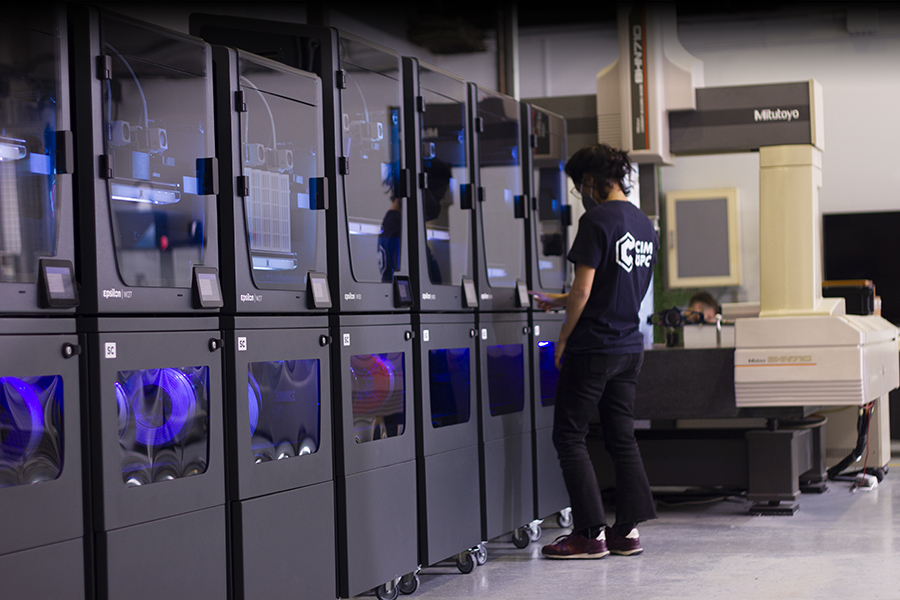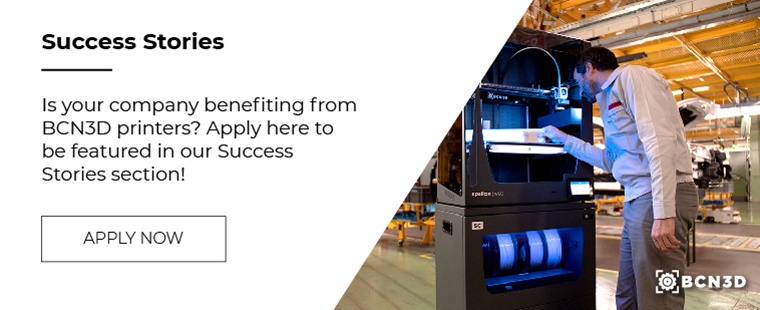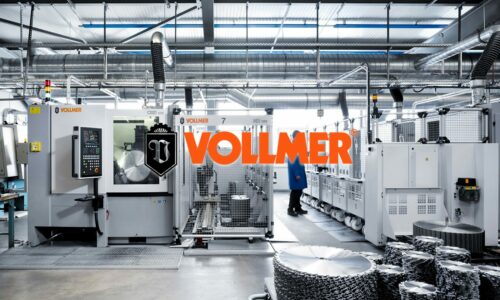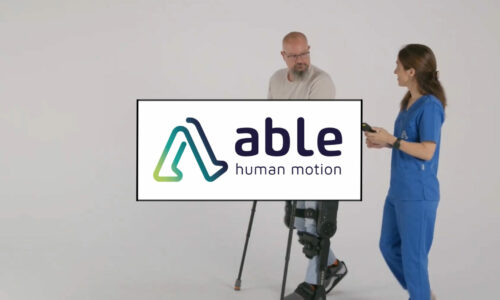The CIM UPC step up their game with an army of BCN3D printers and Smart Cabinets
With the implementation of a small print farm of BCN3D printers and Smart Cabinets, the CIM UPC has accomplished a radical transformation of the way they produce end-use applications. Experts in the field of additive manufacturing technologies, the CIM UPC team have found the Epsilon series printers with Smart Cabinet to be the most valuable solution for both low-volume batch production and big parts.
An advanced manufacturing center, and a top one in Industry 4.0 at that, CIM UPC has deciphered the many complex codes of printing solutions to find the FFF workbench with the BCN3D Smart Cabinet to be the most effective in terms of costs, time and quality. With experience using industrial methods such as SLA, silicon moulding, CNC and SLS, our BCN3D solutions still proved itself as a worthy option for some of CIM UPC’s end use applications.
Where it all began
The CIM UPC holds a special place in our hearts here as the birthplace of BCN3D Technologies. Always on the lookout for new technologies, the CIM UPC consistently carries out R&D activities, with its main aim being to spread additive manufacturing far and wide.
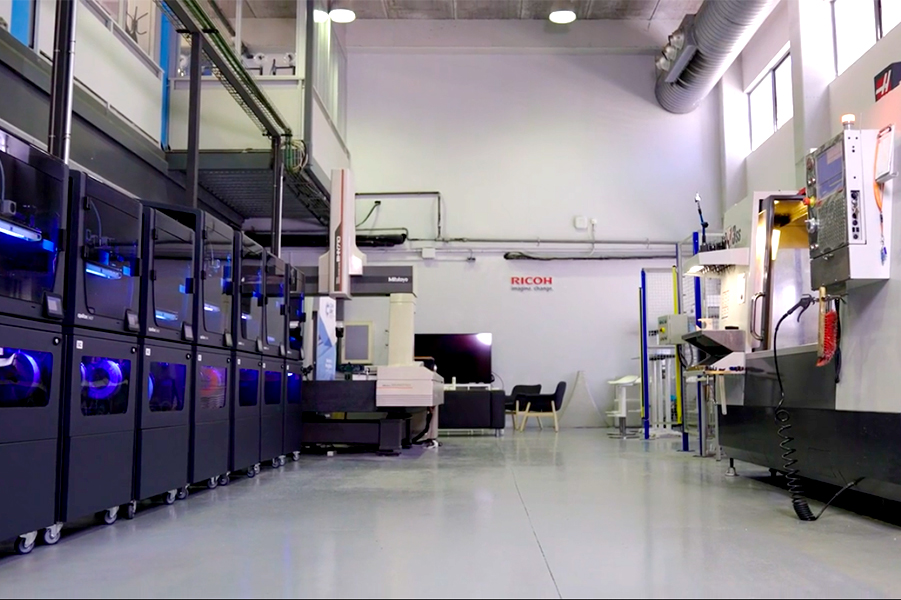
The CIM UPC’s customer base is mainly SME and startups. After analysing the best technology for the parts required, the center either fabricates the parts in its own facilities, or helps said company to adopt the technology themselves. These companies have seen for themselves the benefits of 3D printing throughout their supply chain, all the way from prototyping, tooling and spare parts, to full production. Their main concerns are functionality, quality, cost and delivery time.
FFF technology provided an alternative to industrial additive manufacturing machines, where the entire platform needs to be filled to be worth your while. Moreover, it takes a long time to change from one material to another and it is quite complex. Furthermore, FFF gave the CIM UPC the flexibility to print with a wide variety of thermoplastics, and without it being necessary to fill the whole platform in order to make the print worthwhile.
The printers at work
With the farm of workbench printers:
✓Parts could be manufactured in less than 48 hours
✓A better cost per part compared to other manufacturing methods was achieved
✓The Epsilon W27 and W50 printers provided a big print volume for large print jobs
✓Materials equivalent to those used in injection molding could be used
✓Different printer configurations with different nozzle sizes and materials were available that work for a variety of applications and customers, as opposed to SLS machine where 2 days are needed to to change from the PA12 to PP setup
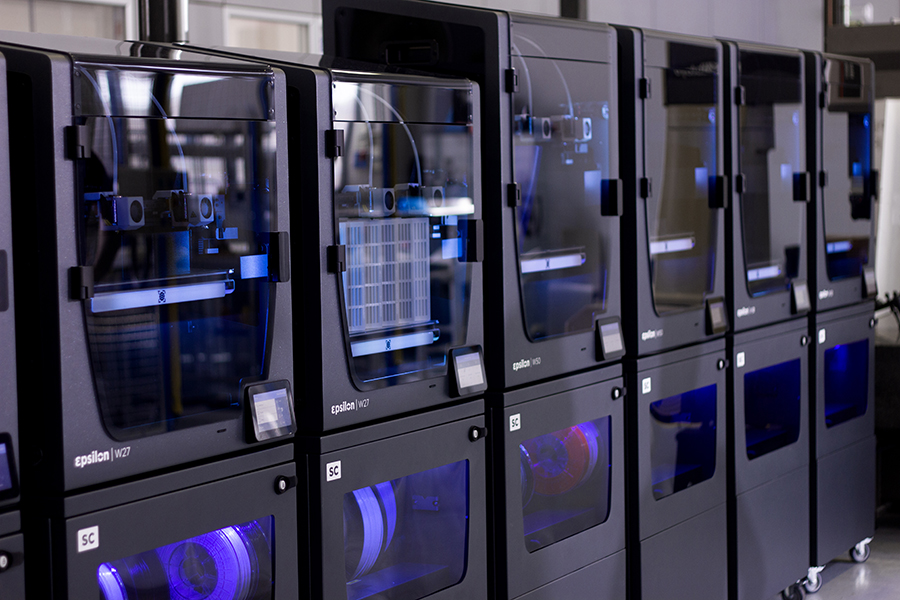
How did the Smart Cabinet lend a hand?
First and foremost, the Smart Cabinet safeguarded all materials from any damage from humidity, by always keeping them at the optimum humidity level. This meant that the technical materials required by the CIM UPC were never damaged or fragile, and performed to the best of their ability with the right mechanical properties.
The combination of the mixture of Epsilon W50 and W27s atop the Smart Cabinets slotted into the facility without taking up too much space. Additionally, the wheels make the farm easily transportable, perfect for navigating around the CIM UPC Pilot Plant where things are ever-changing and evolving.
The Uninterruptible Power Supply minimized any risk of damage to print jobs due to power outages, keeping production up and running 24/7.
Three diverse parts
Let’s take a look at some examples of specific parts for a variety of companies that the CIM UPC produced with their print farm:
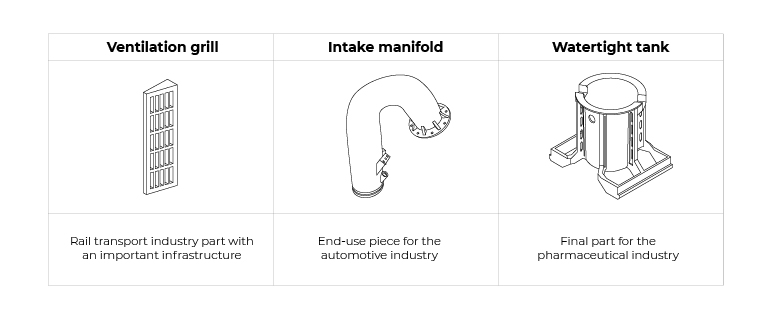
Originally created by injection molding, this ventilation grill from a railway company required an important infrastructure, by keeping the injection molding machine as well as the mold for this piece. However, since only a few of these parts were being manufactured a year, this is an inconvenience for companies. As a result, the CIM UPC recommended they fully digitalize the process by scanning the part and 3D printing it. The first 50 units were delivered in half of the expected time. This was facilitated by IDEX technology and its duplication mode of the BCN3D printers.
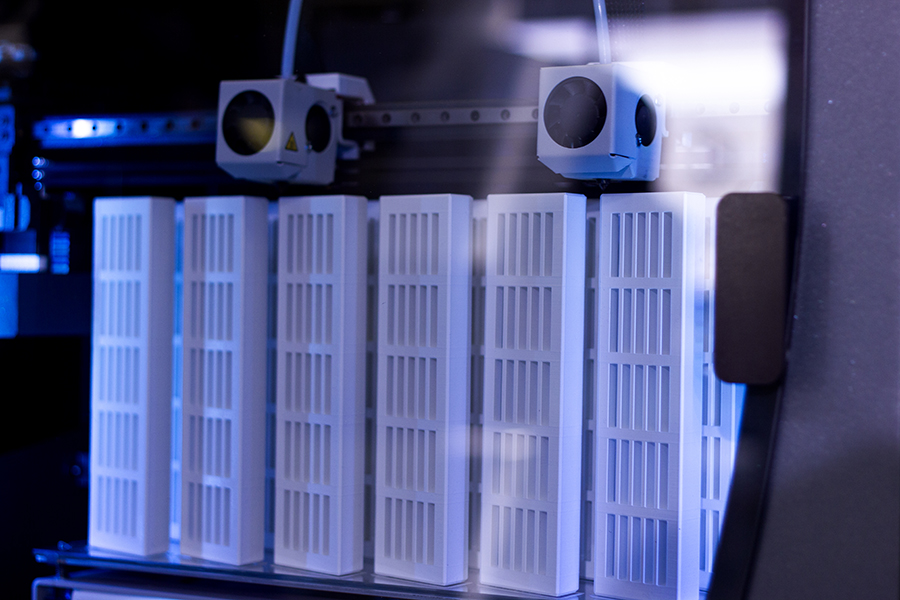
Designed to partake in a university car competition, this intake manifold end-use piece could be fabricated in FFF technology, while still maintaining the mechanical properties obtained from SLS machining. The Smart Cabinet kept the PA in perfect condition despite its high hygroscopicity, and protected against any power outages during the 72h print job.
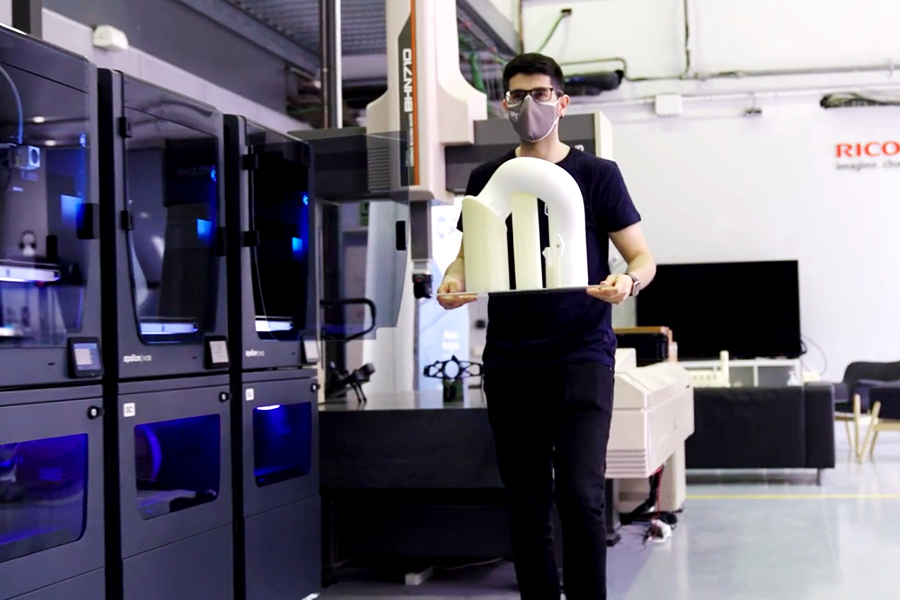
The part shown below is a watertight tank requested by a company in the pharmaceutical industry that designs and manufactures machines. The CIM UPC needed to create 15 units, and started off by looking into 3 options for this business case: MJF with PP; silicon moulding with a like-PP polyurethane; and FFF with PP made of 30% of glass fiber.
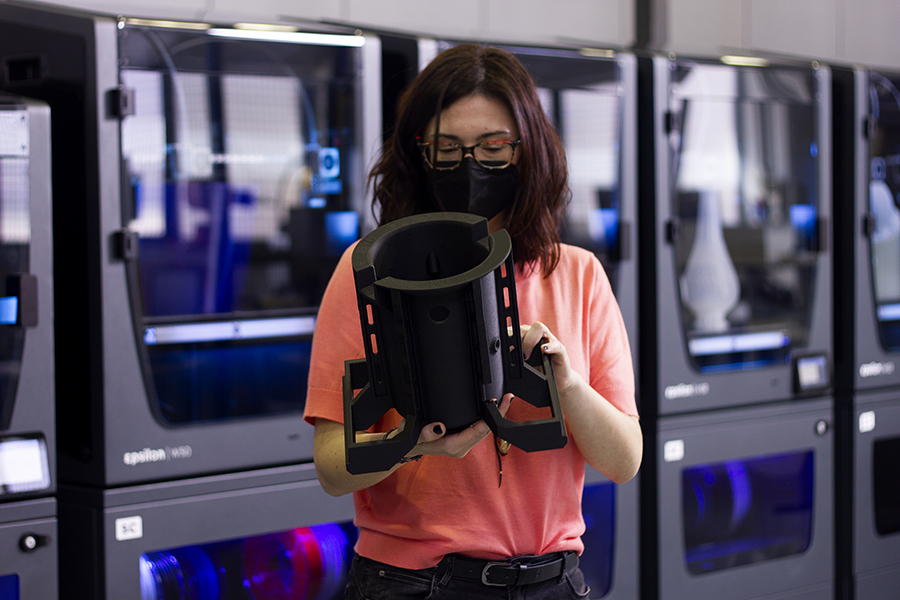
They came to the conclusion that FFF technology would save up to 3-8 thousand euros compared to these other technologies analysed.
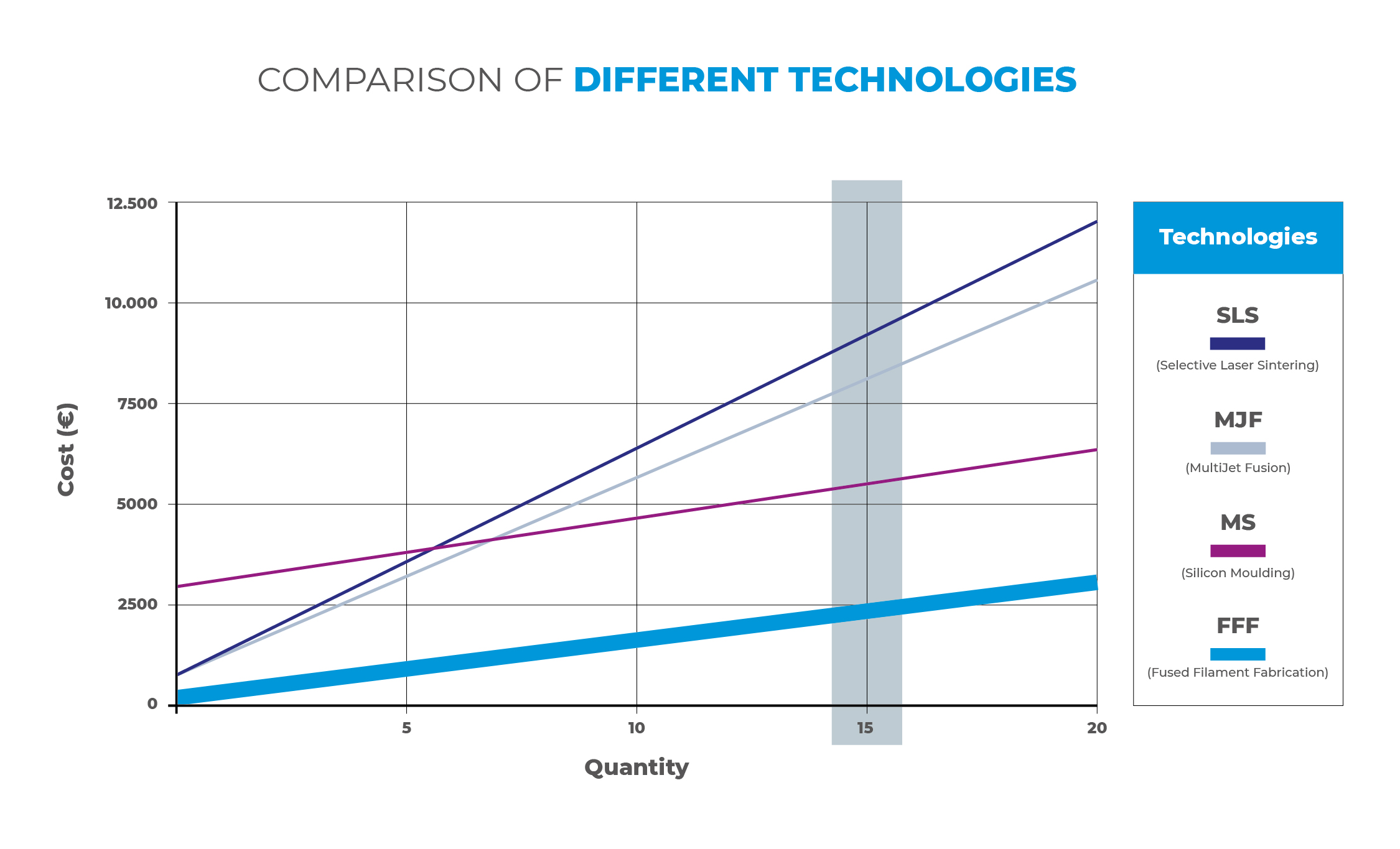
The ventilation grill, intake manifold and watertight tank are just a few examples of the wide range of success achieved with the CIM UPC’s BCN3D print farm. The print farm catered to the versatile needs of the CIM UPC’s customer base across all industries. From time and cost savings, to the mechanical properties of the technical materials, these results prove the effectiveness and reliability of our printers paired with the Smart Cabinet.
Curious to find out more about the Smart Cabinet? Have a read of our white paper on the effects of humidity, watch our product webinar or find the answers to all your questions in our FAQs blog post.

